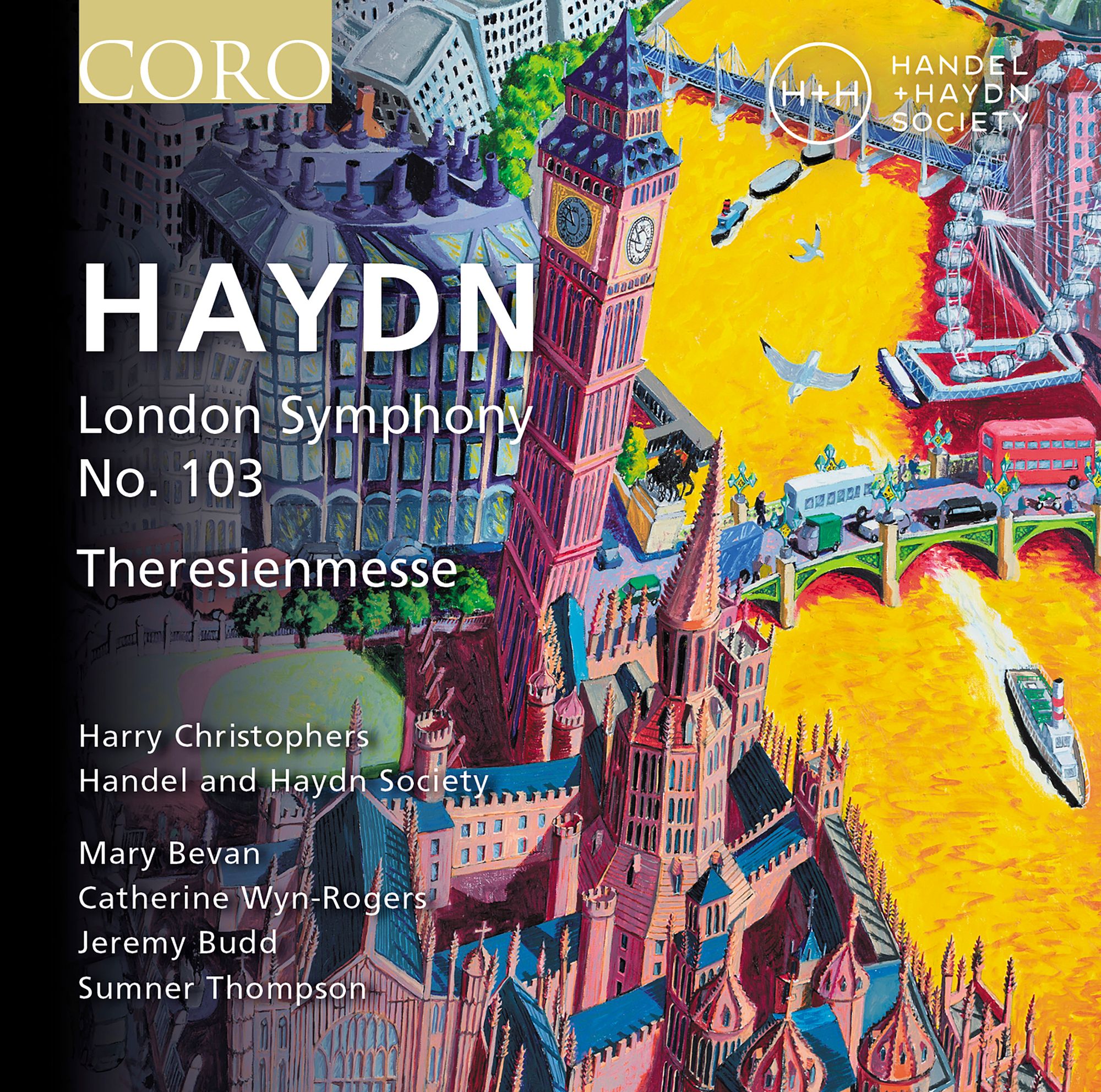Haydn Theresienmesse & Symphony 103, Harry Christophers
A stunning disc. Whether you buy it for the symphony with mass as bonus, or vice versa, there is no going wrong here. Superb

These are wonderfully vibrat performances from Boston. Harry Christophers (of The Sixteen fame) has been Artistic Director fthe Handel and Haydn Society since 2008 - the result of this collaboration is a total of 15 albums on Coro.
Here we have two Haydn masterpieces caught live: the expansive “Deumroll” Symphony (onw of the 12 London Symphonies Haydn composed between 1791 and 1795) and the equally monumental Theriesenmesse (Hob. XXII:12) with a phenomenal line-up of soloists: Mary Bevan, Catherine Wyn-Rogers, Jeremy Budd and Sumner Thimpson.
Bur first, Symphony No. 103, the so-called “Drumroll”. One can hear why it called this right from the off, But listen, also, to the Master’s harmonic workings in the long Adagio opening to the first movement; it is really quite a stretch of time before the happy-go-lucky Allegro conspirito breaks in. Good to have Harry Christophers at the helm here, very alive to the mystery initially then the contrasts in the fast portion; and his Boston band is first-rate, with ome lovely woodwind solos tripping along nicely. The return of the solo drum later on in the movement is a master-stroke:
When it comes to second movement, this is a double variation set (two themes receive variations, alternating). Both are derived from Croatian folk utnes in this instance, so they have a common thread - but one is in the major, one in the minor. Christophers shapes the themes beautifully and fully puts on display Haydn's vast imagination. Note how the period band brings so much colour to Haydn's musical surface. Some superb solo violin playing in evdence here, too, all supported by a fabulous recording. As usual there are lovely, flicitous woodwind variations along with forceful tutti passages (notice how Christophers and his band never overcrowd teh sound, and how the rcording supports this):
After a bumptious, boisterous Menuet and Trio (not a Schoerzo - one could still dance to this!), hunting horns burst forth, actually proclaiming a motivic cell worked through with utter genius by Haydn throughout the movement. An effervescent five minutes, for sure, with a contrapuntal ingenuity and confidence that echoes that in the finale of Mozart's “Jupiter” Symphony:
For the Theresienmesse, the recording seems a little more spread, a little mroe boomy. Thsi is the fourth of Haydn's late masses fr the Septemebr name-day of Princess Marie Hermengild, the wife of Prince Nicolaus II of esterhazy. A copy of the mass we hear here was obtained for the library of the Empress Marie Therese, hence its nickname. Clarinets replace oboes in the orchestra. There are parallels, certainly, with teh Symphony we just heard, in that the Kyrie includes a slow introduction (although it also includes a full fugue later!). Listen to the beautifully balances soloists towards the end of the movement, too:
.. and what a vibrant Gloria Haydn presents here, an explosion of praise. This is a very varied movement, full of colour, each section scored in masterly fashion by Haydn. Mary Bevan's soprano is ravishingly beautiful, floating above beautifully balanced vocal soloists.
No-one but Haydn could have written the sprightly Quoniam, and how light of foot is Christophers here:
Little, though, can prepare the listener for the solo quartet's beauty in the Et incarnatus est. The descruption of the Holy Insemination of Mary and Christ's crucifiction is, for Haydn, a moment of rapt contemplation (the title of the YouTube video is a mistake):
Difficult not to be caught up in the joy of the Et resurrexit, a sense enhanced by the sheer accuracy of the Handel and Haydn Society Orchestra's strings:
The piece ends with the most radiant Dona nobis pacem:
A stunning disc. Whether you buy it for the symphony with mass as bonus, or vice versa, there is no going wrong here. Superb.
